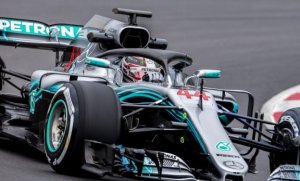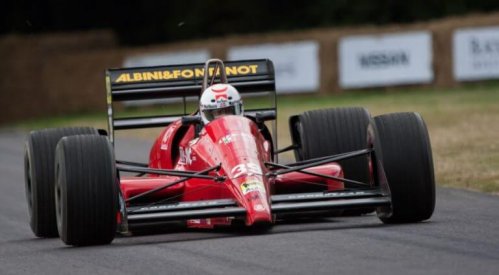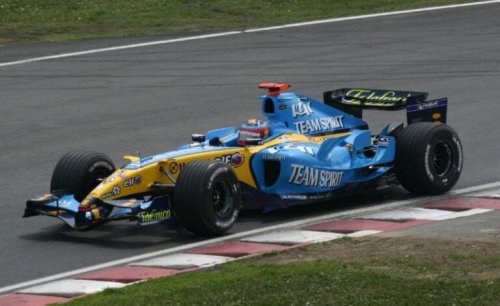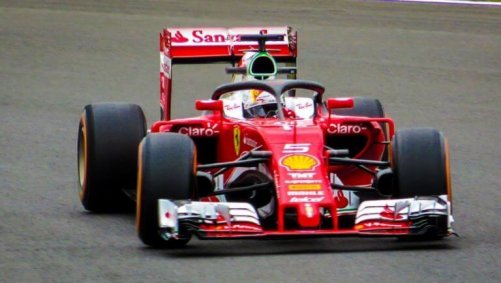How Has Formula One Safety Improved?

Currently, Formula One safety is a priority for the organizers of this sport. Thus, every year, there are new safety measures to avoid and prevent accidents. However, it hasn’t always been this way. Safety in this sport has evolved to reduce and prevent the number of victims, but there will always be a certain degree of danger involved.
In this article, we’ll take a look at the evolution of Formula One safety precautions since the 1950s. For contrast, in the beginning, the drivers were reluctant to use helmets. Nowadays there are so many precautions that some people are concerned that it may ruin the fun part of the sport.
The lack of safety precautions in the beginning
Judging by what we see in the sport today, we might think that the lack of Formula One safety precautions in the 1950s was crazy! Since the use of a jumpsuit was not required until the 1960s, drivers would simply get into their cars wearing their street clothes.
During the first two seasons, the use of the helmet was also not mandatory. During those seasons, those who did choose to wear helmets were considered cowards.

It wasn’t until the 1960s that more safety measures were implemented in the sport. Therefore, cars needed to have roll bars to improve the chances of survival for the drivers. Also during this time, the car designs changed in order to avoid them from catching fire after accidents.
Another important design change was to open the cars in such a way that it allows the drivers to enter and exit the vehicles quickly. Gradually, new safety measures came about, and this has drastically reduced the number of deaths in this sport.
The 1970s increased the Formula One safety
Starting in the 1970s, the FIA took control of the Formula One safety precautions and measures. Therefore, new standards were put into place to protect the drivers and vehicles.
The first one of these was the installation of the cockpit, which guarantees the safety of the driver in an accident. This decade also had another important measure to add to the precautions, the mandatory use of flame retardant clothing.
In the following decades, the FIA established more measures such as the safety car. Meanwhile, it also started demanding that the race tracks were made safer. Before then, there weren’t many required characteristics for the road. Nowadays, the roads must meet a long list of qualifications to be considered part of a circuit.
The number of deaths in Formula One has decreased dramatically thanks to all of these measures. However, it’s important to mention that this is a dangerous sport and there will always be a certain risk. Here’s a list of the number of deaths in this sport, by decades:
- 1950-1959: 15 deaths
- 1960-1968: 11 deaths
- 1970-1979: 10 deaths
- 1980-1989: 4 deaths
- 1990-1999: 2 deaths
- 2000-2009: 0 deaths
- 2010-present day: 1 death

What’s next?
Formula One safety precautions are now the first priority in the sport. Therefore, they will continue to implement new measures and crash tests in order to reduce accidents, injuries, and deaths. The latest safety measure that the FIA established was the halo, which protects the drivers’ head.
The halo may just be the first step to introduce a closed cockpit in Formula One cars. Once this happens, the drivers will be completely covered and safe with no exposed limbs.

The sport is expected to receive more and more safety measures to reduce the risk to drivers. However, it’s also important to maintain a level of entertainment, because Formula One without risks wouldn’t be the same.
Currently, Formula One safety is a priority for the organizers of this sport. Thus, every year, there are new safety measures to avoid and prevent accidents. However, it hasn’t always been this way. Safety in this sport has evolved to reduce and prevent the number of victims, but there will always be a certain degree of danger involved.
In this article, we’ll take a look at the evolution of Formula One safety precautions since the 1950s. For contrast, in the beginning, the drivers were reluctant to use helmets. Nowadays there are so many precautions that some people are concerned that it may ruin the fun part of the sport.
The lack of safety precautions in the beginning
Judging by what we see in the sport today, we might think that the lack of Formula One safety precautions in the 1950s was crazy! Since the use of a jumpsuit was not required until the 1960s, drivers would simply get into their cars wearing their street clothes.
During the first two seasons, the use of the helmet was also not mandatory. During those seasons, those who did choose to wear helmets were considered cowards.

It wasn’t until the 1960s that more safety measures were implemented in the sport. Therefore, cars needed to have roll bars to improve the chances of survival for the drivers. Also during this time, the car designs changed in order to avoid them from catching fire after accidents.
Another important design change was to open the cars in such a way that it allows the drivers to enter and exit the vehicles quickly. Gradually, new safety measures came about, and this has drastically reduced the number of deaths in this sport.
The 1970s increased the Formula One safety
Starting in the 1970s, the FIA took control of the Formula One safety precautions and measures. Therefore, new standards were put into place to protect the drivers and vehicles.
The first one of these was the installation of the cockpit, which guarantees the safety of the driver in an accident. This decade also had another important measure to add to the precautions, the mandatory use of flame retardant clothing.
In the following decades, the FIA established more measures such as the safety car. Meanwhile, it also started demanding that the race tracks were made safer. Before then, there weren’t many required characteristics for the road. Nowadays, the roads must meet a long list of qualifications to be considered part of a circuit.
The number of deaths in Formula One has decreased dramatically thanks to all of these measures. However, it’s important to mention that this is a dangerous sport and there will always be a certain risk. Here’s a list of the number of deaths in this sport, by decades:
- 1950-1959: 15 deaths
- 1960-1968: 11 deaths
- 1970-1979: 10 deaths
- 1980-1989: 4 deaths
- 1990-1999: 2 deaths
- 2000-2009: 0 deaths
- 2010-present day: 1 death

What’s next?
Formula One safety precautions are now the first priority in the sport. Therefore, they will continue to implement new measures and crash tests in order to reduce accidents, injuries, and deaths. The latest safety measure that the FIA established was the halo, which protects the drivers’ head.
The halo may just be the first step to introduce a closed cockpit in Formula One cars. Once this happens, the drivers will be completely covered and safe with no exposed limbs.

The sport is expected to receive more and more safety measures to reduce the risk to drivers. However, it’s also important to maintain a level of entertainment, because Formula One without risks wouldn’t be the same.
This text is provided for informational purposes only and does not replace consultation with a professional. If in doubt, consult your specialist.








